Robert Koch
EOM Minimum Point Bias Voltage Estimation for Application in Quantum Computing
Dec 18, 2024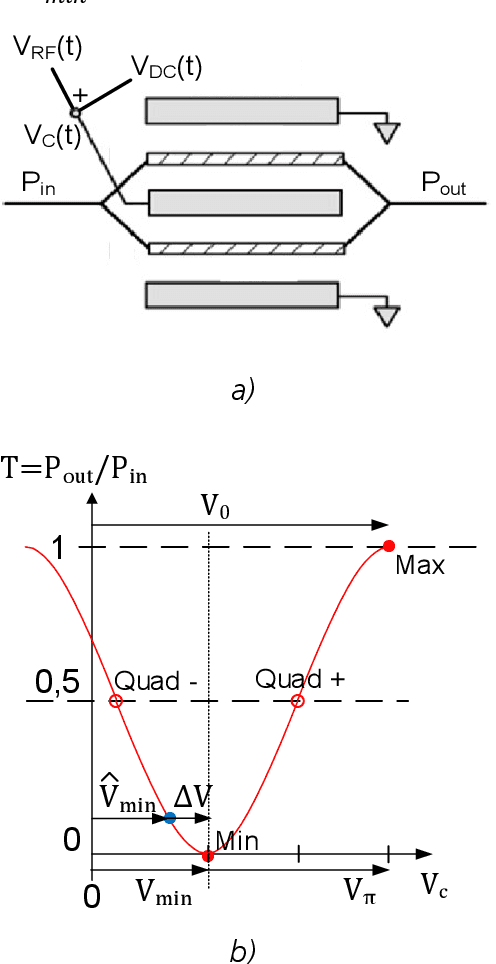
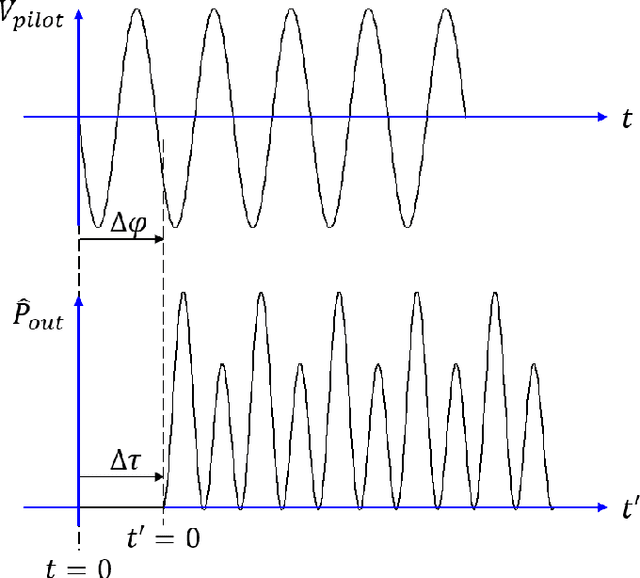
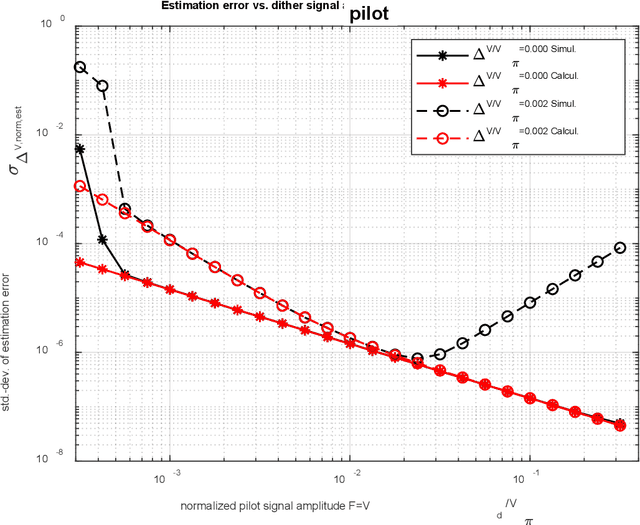
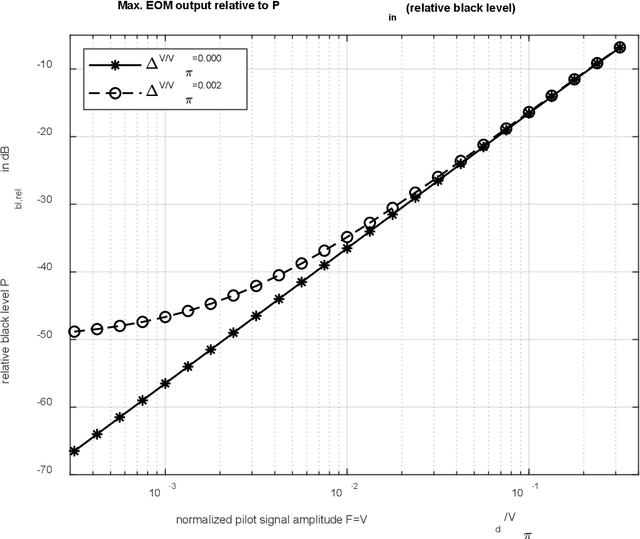
Abstract:In quantum computing systems the quantum states of qubits can be modified among others by applying light pulses. In order to achieve low computing error rates these pulses have to be precisely shaped in magnitude and phase. In practical applications, both acousto-optic (AOM) and electro-optic modulators (EOM) are used for this purpose. The advantages of EOMs, in particular Mach-Zehnder modulators (MZMs), include e.g. higher bandwidth, compactness, good integrability and better noise performance. On the other hand, EOMs are challenging regarding their control voltage regulation as they experience a bias drift, i.e. voltage shifts in the modulator's operating point. Such a shift significantly impairs the quality of the modulation, which is why EOMs usually require a bias control loop to track the DC operating point. This work addresses the estimation of the instantaneous bias voltage using a small pilot tone, where the optical output power of the EOM is tracked by a photodetector feedback signal.
Bias Control and Linearization of the Transfer Function of Electro-optic and Acousto-optic Modulators
Mar 15, 2024
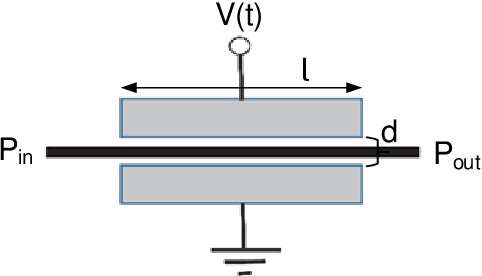
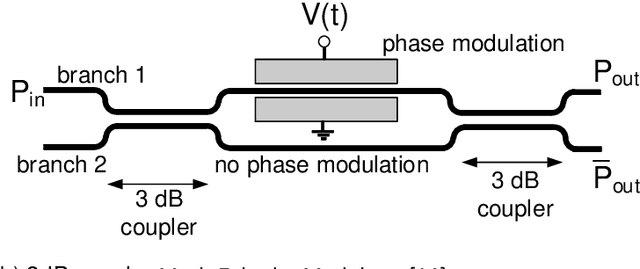
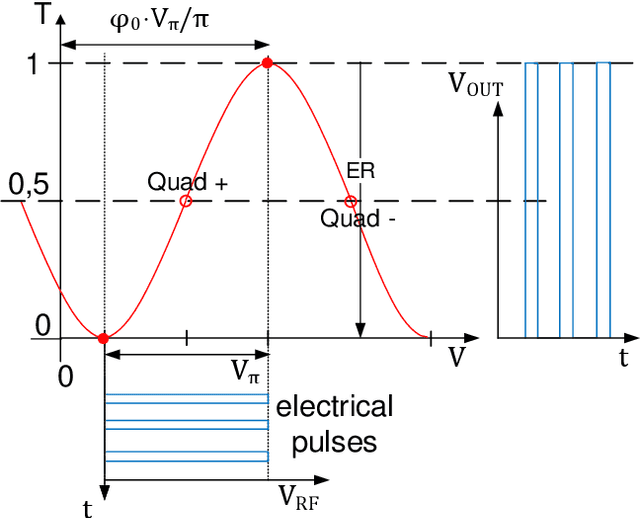
Abstract:In several types of quantum computers light is one of the main tools to control both the position and the quantum state of the atoms used for computing. In practical systems laser light is applied to manipulate quantum states of qubits in the desired way. Beside physical effects like decoherence and quantum noise the precision of qubit manipulation has a significant impact on the achievable quantum computing error rate. One of the key optical components beside the laser is the optical modulator, which modulates or switches a constant power laser light in order to provide light pulses or pulse sequences with a desired envelope. Acousto-optic (AOM) and electro-optic (EOM) modulators can be applied, which are both voltage controlled. However, there is neither a simple linear relationship between their control signal and the precise modulator output, nor can they be considered to have time-invariant characteristics. The aim of this paper is to describe techniques to generate AOM and EOM control signals in such a way that almost arbitrary target output waveforms (i. e. optical power versus time) are achieved with high accuracy.
YANG2UML: Bijective Transformation and Simplification of YANG to UML
May 07, 2020



Abstract:Software Defined Networking is currently revolutionizing computer networking by decoupling the network control (control plane) from the forwarding functions (data plane) enabling the network control to become directly programmable and the underlying infrastructure to be abstracted for applications and network services. Next to the well-known OpenFlow protocol, the XML-based NETCONF protocol is also an important means for exchanging configuration information from a management platform and is nowadays even part of OpenFlow. In combination with NETCONF, YANG is the corresponding protocol that defines the associated data structures supporting virtually all network configuration protocols. YANG itself is a semantically rich language, which -- in order to facilitate familiarization with the relevant subject -- is often visualized to involve other experts or developers and to support them by their daily work (writing applications which make use of YANG). In order to support this process, this paper presents an novel approach to optimize and simplify YANG data models to assist further discussions with the management and implementations (especially of interfaces) to reduce complexity. Therefore, we have defined a bidirectional mapping of YANG to UML and developed a tool that renders the created UML diagrams. This combines the benefits to use the formal language YANG with automatically maintained UML diagrams to involve other experts or developers, closing the gap between technically improved data models and their human readability.
 Add to Chrome
Add to Chrome Add to Firefox
Add to Firefox Add to Edge
Add to Edge